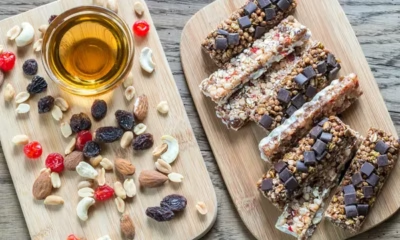Bakery
Snacking State of Mind: Balancing Function & Flavor

As snacking evolves into a more frequent and significant part of daily life for consumers, the demand for products that balance both flavor and function has never been higher. Brands looking to meet the growing need for better-for-you snacks and bakery items must keep pace with consumer preferences that now seek snacking balance flavor that are not only convenient and tasty but also nutritious and made with clean, understandable ingredients.
Key Trends in Snack and Bakery Product Development:
- Snacks as Meal Replacements:
- Snacking has transcended its traditional role, with many consumers elevating snacks to meal status. Rather than having snacks just a few times a week, the trend is toward daily snacking that must deliver more than just taste. As snacking frequency increases, there is an increased focus on nutritious options.
- Consumer Demand for Functional Benefits:
- In addition to fulfilling basic needs like taste and convenience, consumers are looking for snacks that contribute to specific health goals. According to Mondelēz International’s 5th annual State of Snacking report, popular goals include boosting mood and maintaining energy. Protein, vegetables, and clean ingredients are in high demand, with many consumers also seeking snacks that support mental health, energy, and overall wellness.
- The Desire for Nutritious Yet Indulgent Snacks:
- While consumers are keen on snacks that offer health benefits, they are not willing to sacrifice taste or indulgence. The challenge for brands is balancing these seemingly contradictory demands—creating nutritious snacks that are also delicious. This means integrating plant-based proteins, vegetables, and superfoods without compromising on flavor, texture, or enjoyment.
- Ingredient Innovation:
- In response to growing health-consciousness, alternative ingredients are increasingly becoming a hallmark of snack and bakery innovation. Examples include:
- Protein sources such as pea protein, lentils, and hemp.
- Fiber-rich ingredients like chickpeas, almonds, and flaxseeds to support gut health.
- Vegetable-based snacks, like chips made from sweet potatoes, kale, and beets, which provide additional vitamins and minerals.
- In response to growing health-consciousness, alternative ingredients are increasingly becoming a hallmark of snack and bakery innovation. Examples include:
- Clean and Transparent Labeling:
- As consumers demand transparency in the foods they consume, clean-label snacks made with easily recognizable ingredients are becoming essential. Brands need to use simple, natural components while ensuring the product still delivers taste satisfaction and texture that can rival traditional, indulgent options.
Product Development Strategies for Successful Snacking:
- Flavor and Texture Innovation:
- One of the biggest challenges is crafting snacks that offer indulgence without the need for artificial additives or preservatives. Achieving the right balance of crunchiness, softness, and chewiness is critical for consumer appeal. Ingredients like nut butters, coconut flour, and chia seeds can be used to create satisfying textures while contributing to the nutritional profile.
- Using Functional Ingredients:
- Brands can boost the appeal of their products by incorporating ingredients that provide functional benefits. For example, probiotics and prebiotics can be added for gut health, while adaptogens such as ashwagandha and turmeric can provide stress relief. Additionally, omega-3 fatty acids from flax or chia seeds can be included for heart health.
- Protein-Packed Snacks:
- With consumers seeking more plant-based protein sources, snacks made from ingredients like edamame, lentils, or quinoa offer substantial nutritional value while meeting the demand for sustainable protein. These can be used in snack bars, chips, or even baked goods.
- Balancing Indulgence with Health:
- Creating snacks that feel indulgent while delivering nutritional benefits requires using natural sweeteners like monk fruit, stevia, or date paste in place of refined sugars. Additionally, offering familiar treats with a healthier twist (e.g., a vegan cookie with added protein) allows consumers to indulge without guilt.
- Sustainability and Ethical Sourcing:
- Sustainability is becoming increasingly important to consumers. Brands should consider ethical sourcing of ingredients, such as fair trade or organic certifications, and packaging that is eco-friendly or biodegradable.
Conclusion:
The snacking balance flavor market is evolving, and to succeed, brands need to develop products that meet the demand for both nutritiousness and indulgence. This requires innovative formulations that balance functional ingredients with great taste and texture. By staying on top of the latest trends—such as plant-based proteins, clean ingredients, and sustainable sourcing—brands can create snacks and bakery products that resonate with health-conscious consumers while satisfying their cravings.
For the latest updates on snacks area, explore more news on this website.





















